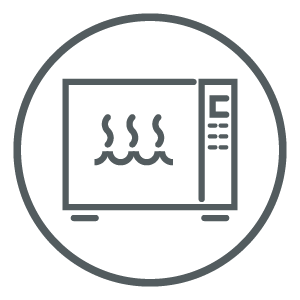 Sterilization & Disinfection
Sterilization & Disinfection
Readying your SPD for a post-COVID world
Editor's Note While responding to demands of the COVID-19 pandemic, perioperative leaders also are busy preparing staff and departments for life after the initial shock subsides. Chief among their preparations are strategies to address the increased demand for surgery because of postponement of elective and nonessential surgical procedures. The sterile…
Device safety depends on routine cleaning, maintenance
Routine cleaning and maintenance of the equipment used to process medical devices is important to prevent contamination of medical devices. This article will discuss the required cleaning and maintenance in a sterile processing department (SPD) as well as the guidelines and regulations that inform these practices. Environmental issues Recommendations…
Heating could be best way to reprocess N95 respirators
Editor's Note This study from Stanford University tests five methods for disinfecting N95 masks and finds that heating them preserves their filtration efficiency for 50 cycles of disinfection. In the study, instead of analyzing N95 masks, which were needed by healthcare workers, the researchers examined pieces of the fabric used…
OSHA issues guidance on reuse, decontamination of N95 respirators
Editor's Note The Occupational Safety and Health Administration (OSHA) on April 24 issued interim guidance on the reuse and decontamination of N95 and other filtering-facepiece respirators during the COVID-19 pandemic. OSHA notes that the National Institute for Occupational Safety and Health (NIOSH) has identified research that suggests the following methods…
Surgeons help create process for disinfecting, reusing N95 masks
Editor's Note In this study from BJC HealthCare and Washington University School of Medicine, St Louis, a multidisciplinary team that included surgeons created a new process for disinfecting and reusing N95 masks, using vaporized hydrogen peroxide. The process allows healthcare workers (HCW) to reuse masks up to 20 cycles, and…
IUSS sterilizes N95 masks without damaging masks
Editor's Note In this study from the Houston Methodist Research Institute, immediate-use steam sterilization (IUSS) using a Steris Amsco Evolution HC1500 PreVac Steam Sterilizer autoclave was performed on N95 masks. Masks were wrapped in paper-plastic sterilization peel pouches (Medical Action Industries 8” role, Ref 422R). A chemical indicator and biological…
ACS releases new guidance to help healthcare facilities prepare for resuming surgery
Editor' Note The American College of Surgeons (ACS) on April 17 released a new document, “Local Resumption of Elective Surgery Guidance,” to help healthcare facilities prepare to resume elective surgery once COVID-19 has peaked in their area. The document includes four categories: COVID Awareness—addresses the community’s COVID-19 numbers, including prevalence,…
Persistence of coronaviruses on inanimate surfaces, inactivation with biocidal agents
Editor's Note A new novel coronavirus (SARS-CoV-2), which causes the disease COVID-19, is the third highly pathogenic human coronavirus that has emerged in the last two decades. The other two are the Severe Acute Respiratory Syndrome (SARS) and Middle East Respirtory Syndrome (MERS) coronaviruses. This analysis of 22 studies finds…
OR business leaders anticipate growth and opportunities in 2020
Planning for volume growth and adopting best business practices for the perioperative environment were overarching themes at the 2020 OR Business Management Conference (ORBMC) in late January. Leading healthcare industry clinicians and experts offered fresh insights into competing in the burgeoning outpatient surgery market and persuading stakeholders to switch to…
Study: Anesthetic management of patients with suspected COVID-19 during emergency surgical procedures
Editor's Note This retrospective, multicenter study from four hospitals in Wuhan, China, found that Novel Coronavirus 2019 (COVID-19) specific guidelines for emergency surgical procedures in patients with confirmed or suspected COVID-19 infection can effectively prevent cross-infection in the OR. The guidelines include: negative pressure ORs level 3 protective measures for…

 Free Daily News
Free Daily News